There can be your advertisement
300x150
Why Your Apartment Looks Cheap Even If the Renovation Was Expensive
How to Give Your Interior a Cozy and Stylish Look
Did you spend half your annual salary on renovation, carefully choosing each tile, yet your friends still frown at your interior? Welcome to the club of those who discovered the bitter truth: expensive doesn't mean beautiful, and beautiful doesn't always cost a lot.
The paradox of modern renovation is that we often spend huge sums on materials and labor but miss the details that create that "expensive" look. As a result, an apartment worth a million can look like a typical "trash" from the zero era, while a modest interior can look like a designer project.
Let's take a look at exactly which mistakes turn even an expensive renovation into a sad misunderstanding.
Main points from the article:
- Cheap hardware and incorrect sockets instantly reveal cost-saving on small details;
- Lighting from one chandelier in the center of the ceiling kills any interior, no matter how expensive it is;
- Lack of decor and "bare" walls create a feeling of incompleteness;
- Incorrect furniture proportions can ruin even the most well-thought-out design;
- Ignoring textiles strips the interior of comfort and that "expensive" feeling.
Hardware Reveals All Your Secrets
You can install Italian tiles for 5000 rubles per square meter and German fixtures, but if the cabinet handles squeak and doors bang like in a dormitory, all the effect is lost. Hardware is the decoration of an interior. Cheap plastic handles on a costly kitchen look just as absurd as plastic earrings with an evening dress.
This is especially true for the kitchen and bathroom. Squeaky hinges, drawers that don't close properly, handles that slip in your hands — all of this instantly creates a feeling of cheapness. Quality hardware works quietly and smoothly. When the door closes with a soft "click" instead of clanging like an iron barrel, it's immediately noticeable.
There's another detail many miss: sockets and switches. Standard white Soviet-era sockets can kill even the most refined interior. Modern sockets with glass or metal frames cost a few cents, but the effect is colossal.
Lighting with One Bulb Is a Direct Path to Failure
Remember apartments from the 1990s with one chandelier in the center of the ceiling? Well, this approach is still popular among those doing renovations. And it's exactly what turns any room into a state institution.
A stylish interior always requires multi-level lighting. General light, local, decorative. Even in a one-room apartment, there should be at least 4–5 light sources: ceiling lights, wall sconces or floor lamps, task lighting in work zones, maybe LED strips.
It's especially important in the bathroom. One bulb above the mirror is a thing of the past. Today, they install mirror lighting, lights on either side of it, and general ceiling light. Yes, it's more expensive, but the difference in perception is huge.
Forget about cold white light in living spaces. Warm light (2700–3000K) makes any space cozier and looks more expensive.
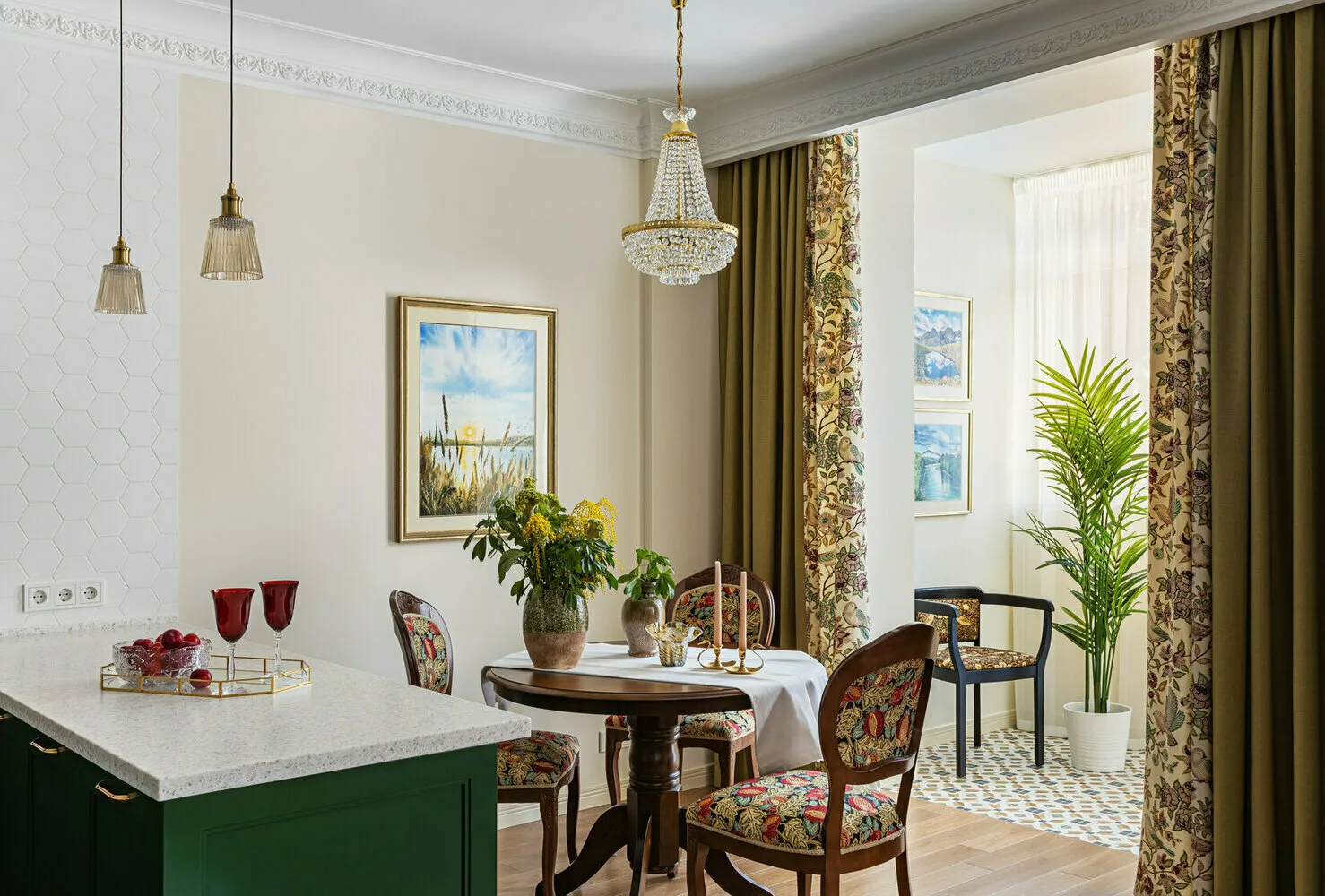
Design: Natalia Shirokorad
Bare Walls Cry Out for Incompleteness
The most common mistake is thinking that after wallpapering or painting the walls, the job is done. In the end, you get a space that looks like a budget hotel room: technically everything is there, but there's no character.
Wall decor doesn't have to be expensive. Posters in frames, photos, even beautiful postcards can transform an interior. The key is not to hang one picture in the center of a large wall. Better to create a composition from several elements.
Shelves are also an excellent way to "liven up" the walls. It doesn't have to be classic bookshelves. Narrow shelves for decor, corner shelves in the bathroom, invisible shelves — all of this adds volume and interest to the interior.
Another tip: mirrors. They not only visually expand space but also add "expensiveness." A mirror in a beautiful frame can become the center of the composition and draw attention away from other flaws.
Furniture Not Matching Size Is a Design Catastrophe
Have you seen apartments where a huge sofa takes up half the room, and the rest of the furniture is squeezed into corners? Or, on the flip side, tiny chairs disappear in a spacious living room? Incorrect furniture proportions can ruin even the most expensive renovation.
The main rule: furniture should match the size of the room. In a small room, it's better to put two small chairs than one huge sofa. In a spacious living room, on the other hand, small furniture will look absurd.
This is especially important for the kitchen. A kitchen cabinet should use space as efficiently as possible. Empty corners, unused ceiling height, lack of upper cabinets — all of this creates a feeling of incompleteness.
Remember about "air" in the interior. Don't fill every centimeter with furniture. Free space is also a design element, and it's very important.
Textiles Solve Everything
The most common mistake is cutting corners on textiles. Bare windows, no cushions on the sofa, cheap bedding, fabric poking out from under the cover — all of this instantly makes the interior cheaper.
- Window treatments can radically change how a room is perceived. It's not necessary to buy expensive fabrics. Even simple curtains from IKEA, hung properly (from ceiling to floor, slightly wider than the window), will look many times better than short curtains covering only half the window.
- Cushions on the sofa are not a whim, but a necessity. They add color, texture, and comfort. The key is not to overdo it with quantity and choose the right sizes.
- Rugs are another underestimated element. They not only add warmth and comfort, but also help zone the space. In a living room, the rug should be large enough to fit at least the front legs of all furniture.

Design: Oksana Butman
Small Details That Ruin Everything
Sometimes interiors are ruined by seemingly insignificant details. Exposed wires, crookedly installed skirting boards, fingerprints on switches, dust on chandeliers — all of this creates a feeling of untidiness.
- Special attention should be paid to joints and seams. Crooked tile joints in the bathroom, gaps between skirting boards and walls, uneven edges of wallpaper — all of this reveals unprofessional work, even if the materials were expensive.
- Don't forget about smell. A new apartment should smell fresh, not of paint or mustiness. Ventilation, aromatic candles, or diffusers — a small detail that affects the overall impression.
- Even such details as a garbage bin or clothes dryer should fit into the overall concept. A plastic bin from "Ashan" in a stylish kitchen looks just as inappropriate as sportswear at a business meeting.
Remember: a stylish interior is created not by the size of the budget, but by attention to detail and understanding the basic principles of design. Sometimes it's enough to change cabinet handles, add proper lighting, and hang a couple of pictures — and your apartment will come alive in a completely new way.
Cover: Design project by Nadezhda Kiselyanikova
More articles:
 7 Ideas for Using the Windowsill to Save Space in Your Apartment
7 Ideas for Using the Windowsill to Save Space in Your Apartment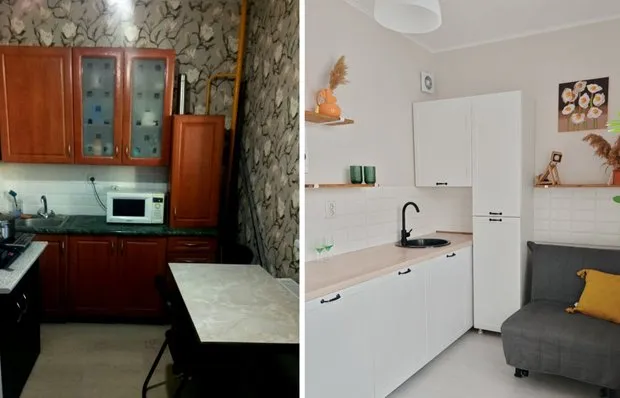 Before and After: Budget Renovation of a Small 32 m² Apartment
Before and After: Budget Renovation of a Small 32 m² Apartment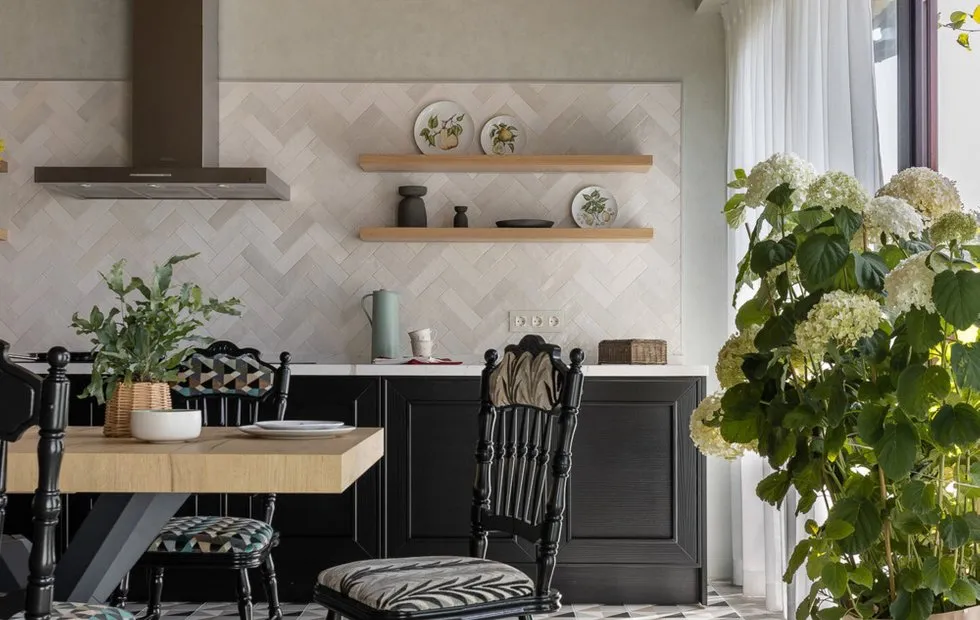 Apartment That Sells in a Week: 5 Tips Real Estate Agents Don't Talk About
Apartment That Sells in a Week: 5 Tips Real Estate Agents Don't Talk About Before and After: How 200 Thousand Rubles on Facades Completely Transformed the Kitchen
Before and After: How 200 Thousand Rubles on Facades Completely Transformed the Kitchen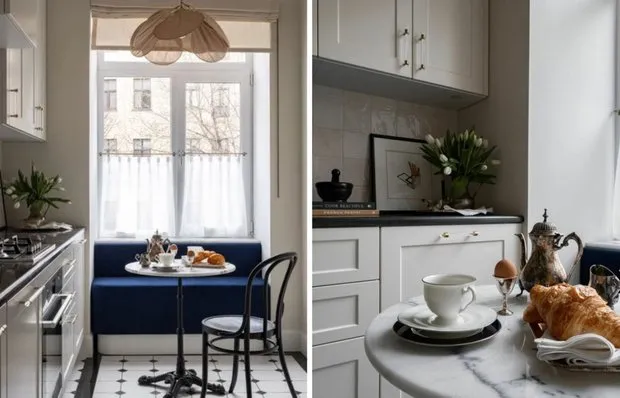 How They Beautifully Designed an 8 m² Kitchen in a Stalin-era Apartment
How They Beautifully Designed an 8 m² Kitchen in a Stalin-era Apartment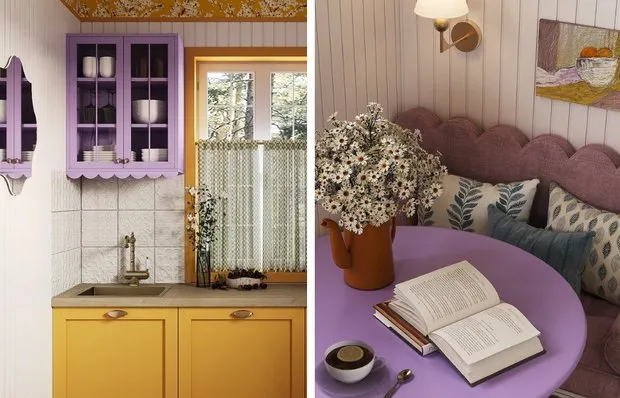 How We Designed a 7 m² Kitchen to Look Spacious and Reminiscent of a Café in Southern France
How We Designed a 7 m² Kitchen to Look Spacious and Reminiscent of a Café in Southern France Bright Mini Bathroom 2 m² with Vacation Vibe
Bright Mini Bathroom 2 m² with Vacation Vibe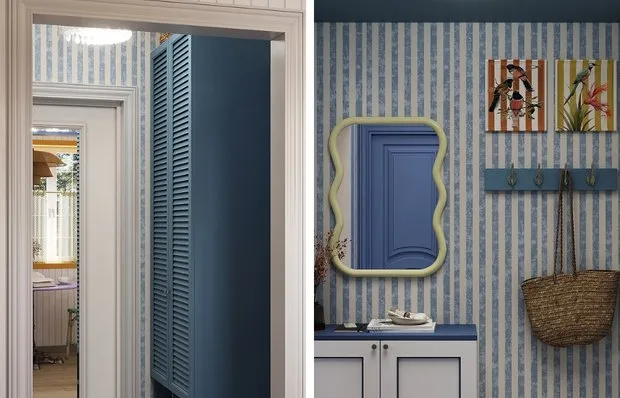 House Face: How They Decorated a 2 m² Mini Entryway with Mediterranean Atmosphere
House Face: How They Decorated a 2 m² Mini Entryway with Mediterranean Atmosphere